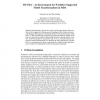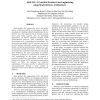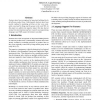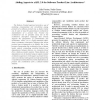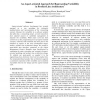CAISE
2004
Springer
14 years 5 months ago
2004
Springer
Abstract. Specification of systems in a software product line (product-line members) is often supported by domain-specific languages (DSLs) that provide pownguage abstractions for ...
ICCSA
2005
Springer
14 years 5 months ago
2005
Springer
Product Line Engineering is being accepted as a representative software reuse methodology by using core assets and product line architecture is known as a key element of core asset...
ECMDAFA
2005
Springer
14 years 5 months ago
2005
Springer
Abstract. A software product line comprises a set of products implementing different configurations of features. The set of valid feature configurations within a product line ca...
SIGSOFT
2005
ACM
14 years 5 months ago
2005
ACM
Reuse has always been a major goal in software engineering, since it promises large gains in productivity, quality and time to market reduction. Practical experience has shown tha...
SAC
2005
ACM
14 years 5 months ago
2005
ACM
Modular and flexible software components can be useful for reuse across a class of domain-specific applications or product lines. By varying the composition of components suited t...
ISSRE
2005
IEEE
14 years 5 months ago
2005
IEEE
The difficulty of managing variations and their potential interactions across an entire product line currently hinders safety analysis in safety-critical, software product lines. ...
ICITA
2005
IEEE
14 years 5 months ago
2005
IEEE
Both product line engineering (PLE) and model driven architecture (MDA) are emerging as effective paradigms for building a family of applications in cost effective way. PLE suppor...
VAMOS
2007
Springer
14 years 5 months ago
2007
Springer
Features have been recognized as important building blocks of software product lines. Unfortunately, features have been mostly confined to modeling activities as they were origina...
VAMOS
2007
Springer
14 years 5 months ago
2007
Springer
The Feature–Oriented approach provides a way of modelling commonalities and variabilities among products of a software product line. A feature model can be used as input for gen...
VAMOS
2007
Springer
14 years 5 months ago
2007
Springer
Aspect-oriented software development has recently emerged as a new paradigm for systematic modularization and representation of the crosscutting concern. Because the variability i...
